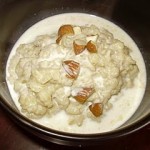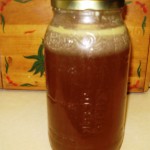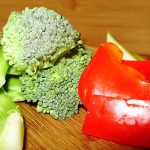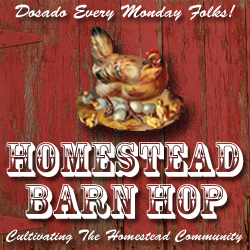Mondays with Millie: Transition to Real Food in 8 Easy Steps
Have you heard about the benefits of a real food diet but aren’t sure how to go about making the switch from a Standard American Diet (we’ll just call that a SAD diet from here on out) to a diet more focused on Real/Whole/Traditional foods (we’ll call this Real Food)? I’m going to give you 8 Easy Ways to begin your transformation with very little ‘pain’ and without blowing your food budget out of the water.
Let’s first explore WHY you should kick your old SAD diet to the curb and move toward a Real Food diet. The number one reason is your SAD diet is killing you. Yes folks, I hate to be blunt but it’s true. Running through the drive-thru three or four times a week, buying everything in a box or can, and using those so called ‘heart’ healthy fats is killing our nation. Slowly for sure, but it is still happening.
I suspect that in your kitchen right now is a box of cold breakfast cereal. Go grab that box (go ahead, I’ll wait). Got the box? Okay, take a look at the ingredients. Is it a long list. Can you pronounce most of it? Does the box tell you how wonderful this cereal will be for you heart, body, etc? It’s not. The truth is, that supposedly healthy box of breakfast cereal is highly processed and the processing turns the grains toxic. TOXIC. This is just one example of why we should move from SAD foods to Real Foods. I could go on but that would take several posts and that is not the focus of this article.I’ve promised you 8 Easy Steps to Transition to a Real Food Diet so here we go!

1. Stop buying breakfast cereal! Remember, this stuff is toxic. Yes, I know that it makes a quick and easy breakfast but so do lots of other things. In my house we haven’t had cold boxed cereal for over 2 1/2 years. What do we eat? All kinds of different things. Eggs and (sourdough) toast, Yogurt Parfait, Muffins, porridge, homemade cold cereal, smoothies and several other items. Take a look at this post for more ideas. We will never go back with it being so easy to replace this toxic food. Plus the cost savings of eating these simple to prepare foods is considerable when compared to a box of poison cereal.
2. Change your fats. Get rid of margarine, Cris*co, canola and those myriad of other man made fats. Switch to traditional fats. What is a traditional fat? Fats that come from something you would recognize. Butter, lard (yes, lard), tallow (beef fat), schmaltz (chicken fat), duck fat,coconut oil, palm oil and real olive oil. If your budget allows it, chuck the garbage oils in the trash and buy the traditional oils. If not, as you run out of the garbage oils replace with a true heart healthy counterpart. You can afford to buy real butter now that you are no longer buying boxed cereal 🙂

3. Make Broth. It is said that good broth will resurrect the dead. Keeping broth on hand will really had to your nutrient dense meals. Stock contains many minerals that the body can absorb and it acts as a protein sparer which allows us to consume meat less often and still maintain excellent health. Broth is a very frugal item to make. And very easy. I take a chicken carcass that all of the meat as been picked off, put it in the crock pot, cover with water, add a lug of apple cider vinegar, turn it on and walk away. The next day I have a wonderful pot of broth ready to be used in any number of ways. And then you know what I do? I start a second batch and then sometimes even a third. I use those bones as much as possible before I’m finished with them! You can read more about how I do broth here.
4. Learn to Cook. Just learning a few basic kitchen skills will go a long ways toward making a move from a SAD diet to a Real Food diet. At my house, we rarely (as in never) have gourmet meals. Just simple, nourishing meals that (most of the time) taste great. On my blog (Real Food for Less Money) I try to share these simple meals. There are many blogs like mine that you can use as a resource plus tons of cookbooks on the market. If you would like a great introduction to learning how to cook/prepare real foods, I suggest the Fundamentals eCourse from GNOWFGLINS and the new Fundamentals II eCourse. This is a great way to learn these skills in a very easy format.
Okay we are half way through our 8 Easy Steps. We ditched the cereal, replaced margarine with butter, we’re making broth and we’re learning to cook. Just these 4 Steps will be wonderful toward your Real Food quest. Let’s continue.

5. Start sourcing better quality proteins. Grass fed (and finished beef) has a much higher nutritional profile than it’s grocery store counterpart, as does free range chicken. And they taste better too. Worried that you won’t be able to afford grass fed or free range? Take a at this article from KerryAnn at Cooking Traditional Foods: Good, Better, Best-Choosing Meats which can help break it down for you. While you are looking for beef, chicken and other meats be sure to find a source for eggs. In my area eggs from free range (not organic certified but truly free range, run around the yard, scratch for bugs) chickens is between $3.00 and 3.50 per dozen. For less than .30 per egg that is some excellent nutrition. Once you have had eggs from free range chickens you will be hooked. The yolks are an amazing yellow, the white is firm, the taste is spectacular. And don’t forget to also consider your milk products. Milk has been described as the ‘perfect’ food. I am a huge fan of real milk. Real milk is milk that has not been pasteurized, homogenized or otherwise altered. Visit realmilk.com to learn about this in detail and source real milk in your area. Check Local Harvest for meat, milk, vegetables, etc in your area.
6. Make your own Salad Dressing.Commercial salad dressings contain rancid oils, preservatives and additives. Have you noticed that an opened bottle of salad dressing never seems to go bad no matter how long it is in the fridge? Scary. Do we really want to put something like that into our bodies? You can make a very simple dressing out of that real olive oil you are now purchasing along with a little mustard (Dijon is nice) and bit of apple cider or wine vinegar. Mix it all up until well blended. Add a little salt and maybe pepper. It will be 100 times better than anything you could buy in the store.

7. Can’t afford to switch to all organic vegetables? I hear you! I can’t either. I use the Dirty Dozen and Clean 15 guide. The Clean 15 are lowest in pesticide residue and not essential to be organic. The Dirty Dozen is just how it sounds, the 12 highest in pesticides and should be purchased organic. I lean toward buying foods on the Clean 15 and only buy the organic versions of the Dirty Dozen when the price is in a range I can afford. That usually means they are in season. One thing to note: Corn is on the Clean 15. While this is a low spray item you should be aware that there is a good chance that corn that is not organic is going to be GMO (Genetically Modified Organism). Something to think about.
8. Cut out the junk! This should probably be higher on the list. By cutting out junk foods, cutting down on drive-thru stops and impulse dining out you can put the $$ that you would have spent on those things toward higher quality foods. We found that by eliminating one meal out per month we could afford our Grass Fed Beef CSA. We get 10 pounds of wonderful high nutrition beef for the same amount (actually a little less) than one meal out costs our family of 5 at a regular sit down restaurant. Believe me, I can cook a whole lot of meals with that 10 pounds of beef! If dining out is not your thing, think about other junk food style items you could eliminate. Maybe packaged cookies, chips, frozen dinners, soda pop, etc. Even if you just reduced your purchases of those items and applied them toward Real Food, you would do your health (and possibly your waistline) a huge favor.
There you have it! 8 easy steps toward a Real Food diet. Get rid of cereal, switch your fats, make broth, learn to cook, find higher quality proteins, make your salad dressing, use the Dirty Dozen/Clean 15 guide, cut out the junk.
I hope these suggestions are helpful to you. Keep in mind, these are only suggestions based on what worked for my family. We successfully transitioned from a SAD diet to a mostly Real Food diet (we are 85% real food and 15% we don’t worry about) over the course of many months. This slow transition allowed us to keep our food spending at the same rate it was on a SAD diet. Our journey continues…
Resources
Have you seen the series of videos recently released by The Weston A. Price Foundation? They are wonderful. I especially love this one for working with a limited budget. Some of the ideas presented above are things suggested in Nourishing Traditions by Sally Fallon and Mary Enig. This is a great book! I highly recommend adding it to your home library.
Photos: Question Mark from the.sprouts on Flickr, all other photos by Millie (realfoodforlessmoney.com)
2 thoughts on “Mondays with Millie: Transition to Real Food in 8 Easy Steps”
Leave a Reply to Millie Cancel reply



Thank you so much for this post! Eating foods that are real is something I really want to work on. I’ve been struggling with how to actually implement this and this certainly helps point me in the right direction!!
You are welcome Monica. I remember how overwhelming it was when I first heard of a real/whole/traditional foods diet. For my family, taking it one step at a time as worked well.